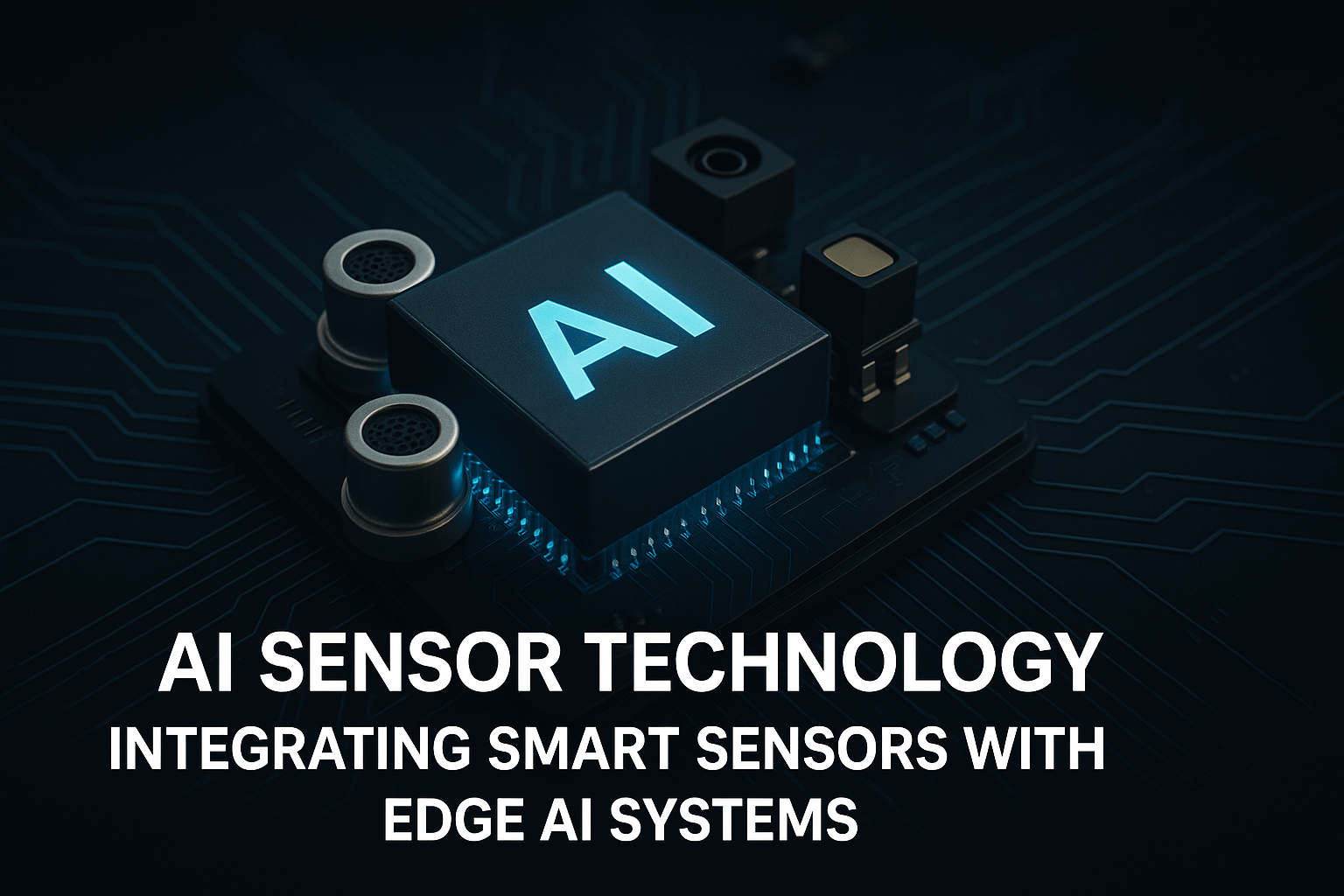Summary:
AI sensor technology is becoming the true bottleneck — and opportunity — in artificial intelligence. While algorithms get bigger, their real-world value depends entirely on the quality, range, and accuracy of sensors feeding them data. This article explains why smart sensors for AI will drive breakthroughs across robotics, autonomous vehicles, industrial automation, and healthcare.

Why AI and Sensors Are Inseparable
Every major leap in artificial intelligence follows one rule: No data, no AI. The most powerful models rely on torrents of data — but the source and type of that data matter profoundly. Today’s large language and vision models are trained mostly on digital information scraped from the internet, not real-world signals. That leaves AI “smart” in simulation but blind to the physical world when it comes to robots, vehicles, or medical systems (No Data, No AI).
True progress comes from sensors for artificial intelligence — optical, tactile, acoustic, chemical, and thermal — that bridge digital cognition with physical context. They transform AI from prediction to perception, enabling autonomy, precision, and safety (The Role of Sensors in the Evolution of Robotics).
Related on this site: Green Steel & CBAM · Hydrogen Storage Technologies · Born to Disrupt: The Book
The Business Case for AI Sensor Technology
Across every sector where physical performance matters, AI sensor integration delivers measurable advantages:
- Robotics: Autonomous robots rely on sensor fusion — merging vision, lidar, ultrasound, and tactile feedback — to operate safely in complex environments (Sensors and AI for Smart Sensing).
- Autonomous Vehicles: The biggest roadblock isn’t AI algorithms but sensor constraints such as range, calibration, and environmental robustness (An Overview of Sensors in Autonomous Vehicles).
- Manufacturing: In predictive maintenance, connected sensors with embedded AI detect wear, temperature, or vibration anomalies before failure occurs (Bridging the Gap Between Sensors and AI Innovation).
- Healthcare: Wearables and diagnostic devices now use AI-powered sensors to capture physiological signals that reveal illness before symptoms appear (AI-Driven Sensing Technology: Review).
Why Internet Data Alone Isn’t Enough
AI models trained solely on web-scale data suffer from latency, bias, and outdated context. In industrial safety, medical imaging, or security systems, milliseconds count. Only real-time sensor data — not static internet content — can support fast, context-aware decisions (AI and Sensors: A Powerful Combination).
Without continuous improvement in AI sensor hardware, even the best neural networks are limited by “garbage in, garbage out.” Poor signal quality directly caps system reliability — a critical constraint for AI adoption in healthcare, transport, and energy management.
Smarter Sensors and Edge Intelligence
The next AI wave moves from the cloud to the edge, embedding AI inside sensors themselves. This approach cuts latency, reduces bandwidth, and strengthens privacy. Edge-ready chips like Bosch’s BHI260AP or Sony’s IMX500 already perform on-device analytics, turning every sensor into a mini inference engine (Sensors and AI for Smart Sensing).
Integrated AI enables sensors to self-calibrate, adapt to context, and perform multi-modal fusion in real time — a leap toward machines that perceive and respond like biological systems (AI-Driven Sensing Technology: Review).
Also see: Born to Disrupt — The Book
Commercial Strategy: Investing in AI Sensor Technology
For investors, R&D directors, and product strategists, the takeaway is clear:
The ceiling of AI’s potential depends on the floor set by its sensors.
- Prioritise AI sensor technology upgrades over marginal algorithm tweaks.
- Adopt multi-sensor systems for robust, context-rich insights.
- Invest in smart sensors for AI with embedded edge processing and cybersecurity.
- Target low-power sensor designs to scale industrial and IoT deployments sustainably.
- Form partnerships with sensor innovators and materials scientists, not just cloud AI vendors.
Technical Foundations: Sensors as the True Limit of AI
The next frontier isn’t just bigger models but better sensing — quantum, neuromorphic, and self-calibrating arrays capable of capturing richer signals. These systems will fuel AI breakthroughs in self-driving logistics, precision manufacturing, health diagnostics, and smart infrastructure (Artificial Intelligence, Machine Learning and Deep …).
In summary:
AI without advanced sensors remains disconnected from reality. The future of artificial intelligence depends on breakthroughs in sensing technology that allow machines to see, hear, and feel the world as humans do — safely, instantly, and autonomously.
What is AI sensor technology?
AI sensor technology refers to smart sensing hardware—optical, tactile, acoustic, chemical, and more—designed to capture high-quality real-time data for artificial intelligence systems, often with edge processing for low latency and privacy.
Why do smart sensors for AI matter more than bigger models?
Because model performance is constrained by input quality. Smart sensors provide accurate, context-rich signals that improve reliability, safety, and autonomy in the physical world.
How does edge intelligence improve AI sensor technology?
Embedding AI on or near the sensor reduces latency and bandwidth, enables on-device analytics, and supports self-calibration and multi-modal fusion for faster, more private decisions.
Which industries benefit most from sensors for artificial intelligence?
Robotics, autonomous vehicles, industrial automation and predictive maintenance, and healthcare wearables/diagnostics see the largest gains today.

Pingback: October 2025 IMO Shipping Decarbonisation Delay: Politics, Clean Fuels, and the Future of Green Maritime Policy